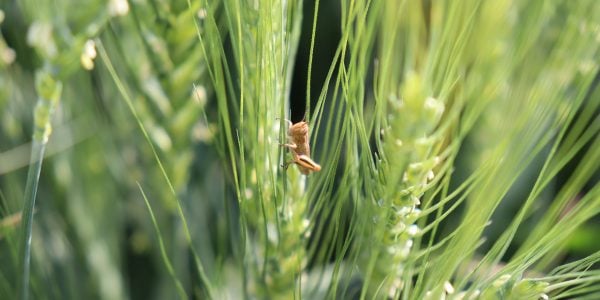Grasshoppers, both pest and non-pest species, thrive in dry conditions. Two consecutive dry cycles can cause grasshopper populations to explode and wipe out crops. Even a wet year will likely not reverse this spike in life cycle, so farmers in Saskatchewan and Alberta should be on alert for increased pest grasshopper populations.
As discussed with James Tansey, Provincial Entomologist with the Saskatchewan Ministry of Agriculture in this episode of Wheat School, there are 85 species of grasshoppers, of which only four are pests of concern to grain crops.
“If they fly out in the spring or make noise when they fly, they’re not a pest,” Tansey said, meaning scouting and on-the-ground observations are paramount to addressing potential problems.
Story continues below.
One of the best ways to find grasshoppers is to step out and count the insects as they scatter. Sweep nets don’t work for adult grasshoppers, because they have excellent eyesight and either scatter or hold on tight. Sweep nets are good for identifying species and finding larvae, Tansey says.
Tansey said new guidelines have been proposed to take into account larval populations, with plans to provide as much advance warning as possible of population spikes.
In the video, Tansey also explains the regulation of lambda-cyhalothrin, an active ingredient that farmers have relied on to control locusts. This active ingredient, found in products such as Matador and Silencer, is no longer permitted for use on feed crops, but is still permitted on a wide variety of food crops. Tansey says to always check labels and crop protection guides for products that can be used to control locusts.
subscribe: Apple Podcasts | Spotify | | All Podcasts






